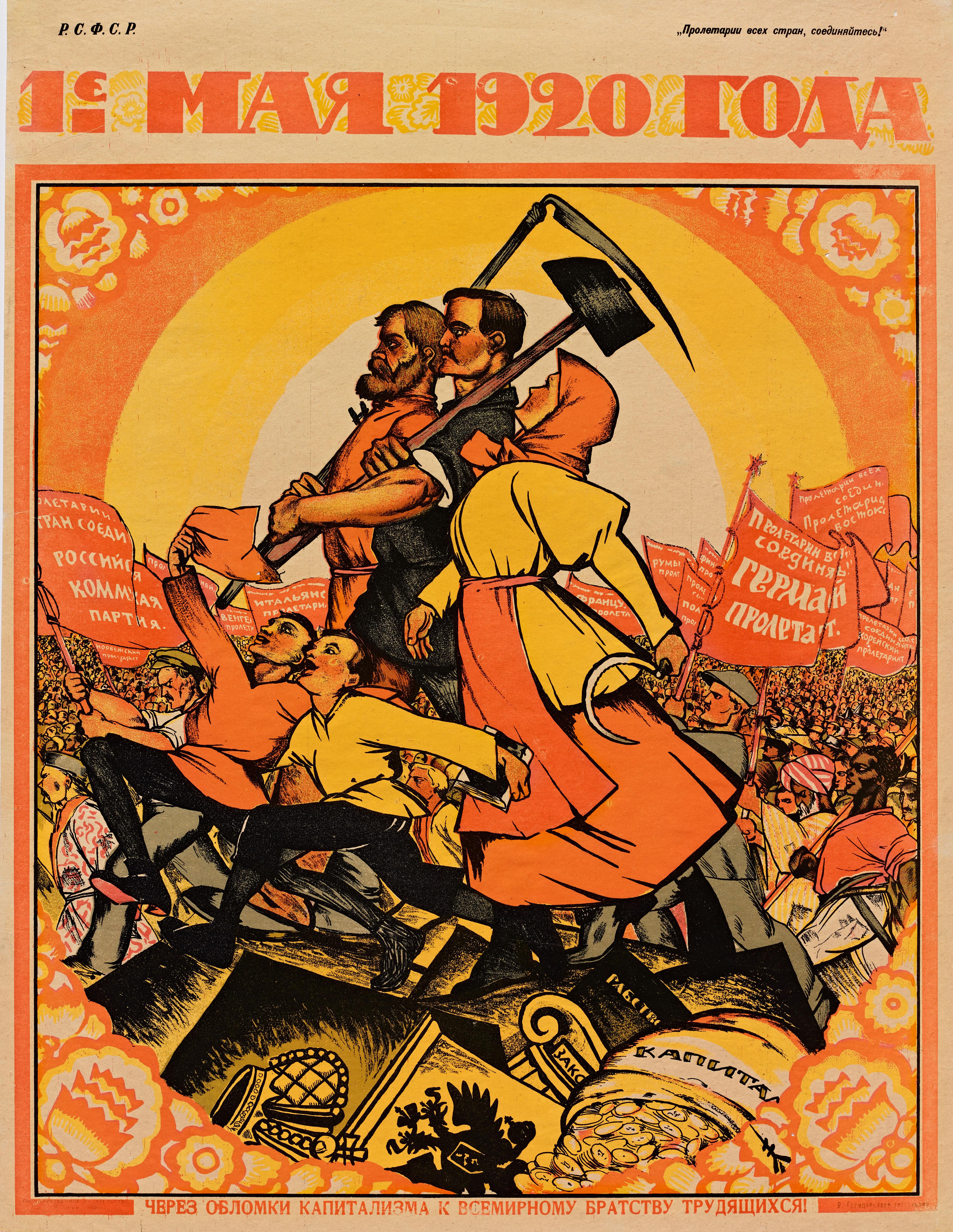The Crown under the Hammer: Russia, Romanovs, Revolution
October 18, 2017–March 4, 2018
Stanford, California–On the 100th anniversary of the Russian Revolution, The Crown under the Hammer highlights the dramatic shift in aesthetic tastes and artistic sensibilities ushered in by the fall of the last Russian tsars and the rise of the first Soviet commissars. The richly diverse material included in the exhibition, which unfolds across two sites on campus, is drawn largely from the Hoover Institution Library & Archives at Stanford, as well as from Stanford Libraries’ Special Collections, the Bowes Art & Architecture Library, and the Cantor Arts Center. A model of cross-campus cooperation and collaborative scholarship, this project spotlights the university as one of the world’s richest repositories of artwork and documentary material relating to the politics, society, and culture of late imperial and early Soviet Russia.
The exhibition will take place simultaneously at both the Hoover Institution and the Cantor. At the museum, provocative juxtapositions demonstrate the dramatic cultural shifts that took place in Russia in the first decades of the 20th century. Works on view range from easel paintings that reflect the Russian elite’s enormous affluence and respect for tradition, to mass-produced posters and printed matter that exemplify the Soviet regime’s forward-looking perspective and revolutionary agenda. The Soviet-era works also testify to the revolution’s enduring impact on artists around the world. “For a brief period after the revolution, the Soviet state supported remarkable avant-garde artists who worked in a variety of media and embraced the most cutting-edge visual languages of the day. The marriage of progressive aesthetics and radical politics in the early revolutionary years continues to inspire creative thinkers today,” said Jodi Roberts, the Robert M. and Ruth L. Halperin Curator for Modern and Contemporary Art at the Cantor and a co-curator of the exhibition.
The installation at Hoover provides an opportunity to examine the wealth of rare visual and documentary materials and historical objects housed in its library and archives. Since the 1920s, the Hoover has been collecting books, periodicals, pamphlets, posters, photographs, manuscripts, official and personal correspondence, and ephemera related to early 20th-century Russia and the Soviet Union.
In the exhibition, treasures like the drafts of Tsar Nicholas II’s abdication statement take their place alongside newly accessible rarities, such as hand-tinted photographs of street scenes in 19th-century Moscow. Documentary materials that illuminate the tumultuous last years of Romanov rule can be examined alongside photographs of mass demonstrations on the streets of St. Petersburg in 1917, as well as striking examples of early Bolshevik propaganda. Bertrand M. Patenaude, research fellow at the Hoover Institution, lecturer in international relations at Stanford, and co-curator of the exhibition, said: “On their own, the Cantor and the Hoover routinely mount public exhibitions of consistently high quality. This collaborative enterprise has inspired the creation of something unique and memorable in the form of a thought-provoking and eye-catching art and history exhibition.”
Teams from both organizations have worked closely on the selection of objects on view at the Hoover and the Cantor, as well as on the development of public programs related to the exhibition. “The Crown under the Hammer is a great example of what can happen at a university art museum,” Roberts said. “Organizing this exhibition has been a truly collaborative process. The partnership between the Cantor and the Hoover has prompted specialists from a variety of fields to think again about the revolution and its legacy. It has given us the chance to re-consider what exhibitions at a premier university can be.”
Accompanying the exhibition will be a diverse program of public lectures and events, including a lecture by Patenaude on the Russian Revolution, and a film series that explores groundbreaking Russian and Soviet film. Montage Fever, a special film presentation organized by Pavle Levi, associate professor of film and media studies and faculty director of Stanford’s Center for Russian, East European and Eurasian Studies, will be on view in the Cantor's Lynn Krywick Gibbons Gallery from October 18, 2017–January 21, 2018.
The Hoover Institution Library & Archives
Founded by Herbert Hoover in 1919, the Hoover Institution Library & Archives are dedicated to documenting war, revolution, and peace in the 20th and 21st centuries. With nearly one million volumes and more than six thousand archival collections from 171 countries, the Hoover supports a vibrant community of scholars and a broad public interested in the meaning and role of history. For more information on the Hoover Institution Library & Archives, visit www.hoover.org/library-archives.
Cantor Arts Center at Stanford University
Founded when the university opened in 1891, the historic museum was expanded and renamed in 1999 for lead donors Iris and B. Gerald Cantor. The Cantor’s collection spans 5,000 years and includes more than 38,000 works of art from around the globe. Ranging from classical antiquities to contemporary works, the Cantor’s holdings include the largest collection of sculptures by renowned master Auguste Rodin in an American museum. With 24 galleries and more than 15 special exhibitions each year, the Cantor is one of the most visited university art museums in the country and is an established resource for teaching and research on campus. Free admission, tours, lectures, and family activities help the museum attract visitors from Stanford’s academic community, the San Francisco Bay Area, and from around the world.
This exhibition and accompanying catalogue are co-organized by the Hoover Institution Library & Archives and the Cantor Arts Center. We gratefully acknowledge support from the Hoover Board of Overseers, the Halperin Exhibitions Fund, the Mary Lois and Jack Wheatley Fund, Mary Anne Nyburg Baker and G. Leonard Baker, Jr., and Roger and Martha Mertz.

